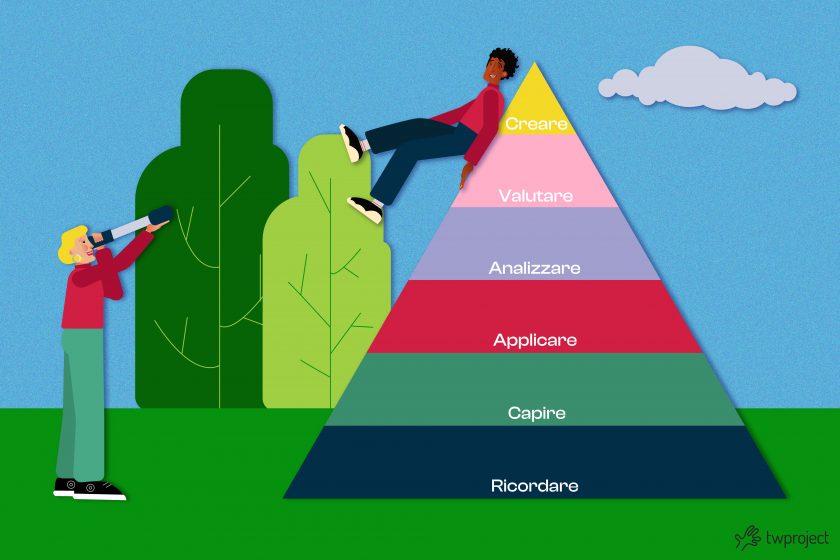Project management is a complex discipline that involves accurate organization and planning of diverse activities and resources.
Taxonomy helps clarify the work by classifying things orderly into groups and subgroups based on their similarities and relationships.
Particularly in project management, taxonomy is like a map that guides the project manager through all project phases and activities, ensuring that nothing is overlooked and that all resources are used efficiently.
Let’s take a closer look at taxonomy and how it can improve project management.
CONTENT
What is project taxonomy?
Taxonomy is literally the discipline that deals with the hierarchical classification of not only inanimate but also living elements.
Objects or concepts are sorted into categories based on shared properties.
In project management, taxonomy focuses on classifying project activities, resources, risks, and objectives.
This categorization then helps project managers maintain control over the project by providing smooth communication among team members.
This way, everyone uses the same language and understands the terms and categories, reducing the chances of misunderstandings.
How taxonomy relates to project management
Project managers must lay the foundation efficiently and effectively to implement taxonomy in project management.
Here are the key steps to take to ensure a solid base:
- Define categories: Identify the main categories that will be used to classify project activities, resources, risks, and objectives. This involves a deep understanding of the project, its scope, and its components. Some questions can help at this stage, such as: What objectives are you trying to accomplish? Yet another key consideration is to determine the project’s scope by clearly identifying the domains, topics, and content areas it will cover.
- Carry out research and understand business needs: Conduct adequate research to understand the domain or subject area and confirm its relevance before delving into the taxonomy development project. Existing business taxonomies will be an excellent starting point, and identifying common terminologies, concepts, and relationships may influence the design of your taxonomy.
- Create a hierarchical structure: At this stage, you should organize the categories into a hierarchical structure that reflects the relationships between the project’s different parts. This can be done using tools such as the Work Breakdown Structure (WBS).
- Document the taxonomy: This must be carried out in a clear and comprehensive form, ensuring all team members can access this documentation. This will facilitate everyone involved in the project’s understanding and adoption of the categories and hierarchical structure.
- Training: This means training team members on the taxonomy and its use in project management. This will ensure that everyone understands the importance of the hierarchical structure and knows how to apply it to daily work.
- Integrate taxonomy with risk management: A well-structured taxonomy can also improve risk management across your project. By systematically classifying risks and associating them with specific activities, resources, or objectives, project managers can better identify areas with potential hazards and develop more effective mitigation strategies. This proactive approach to risk management helps prevent problems before they can negatively affect your project.

The taxonomy project does not end after these steps.
Your company’s organization should iterate and continually refine the taxonomy based on user feedback and following business changes.
Implementing a clear and well-defined taxonomy requires some effort, but the long-term benefits in terms of project efficiency and success will be tangible.
Twproject’s importance in project management taxonomy
We know how, in project management, efficiency and organization are key factors for success.
Taxonomy provides the means to achieve an orderly and consistent management level, but proper management requires good project management software.
Therefore, a tool such as Twproject becomes critical to ensuring efficiency and improving productivity and the quality of results.
With this tool you can create a clear and detailed hierarchical structure, simplifying the division of activities into tasks, subtasks and milestones. Dependencies and deadlines will then be instantly identifiable.
Resource management is another crucial aspect that Twproject‘s advanced features will make it possible to optimize and monitor as best as possible.
Furthermore, thanks to its in-depth and customizable reports, you can maintain control over the project’s progress by making timely adjustments.
These highly customizable reports allow managers to identify any delays or problems and proactively take action quickly.
This degree of control and transparency is crucial to keeping a project on schedule and on budget and ensuring the quality of the end result.
Ultimately, Twproject promotes a culture of continuous improvement within project teams. By supporting feedback-based iterations and updates, the software can be refined over time to meet evolving best practices and changes in business needs.
This dynamic approach to project management ensures that businesses can adapt quickly to new contexts and challenges while maintaining a high level of efficiency and organization.




